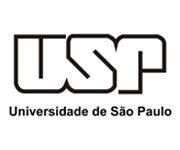HONG KONG, Aug. 4, 2025 /PRNewswire/ -- A collaborative research team led by Hong Kong Baptist University (HKBU) has developed a multifunctional nanorobot equipped with silver and gold nanorods to facilitate high-performance pollutant degradation and bacteria elimination, with its mobility navigated by the application of magnetic fields. The invention holds potential for broad applications in antibacterial treatments, sewage management, and biomedicine.
Continue Reading
A collaborative research team led by Professor Ken Leung Cham-fai, Associate Professor of the Department of Chemistry at HKBU, has developed a multifunctional nanorobot to facilitate high-performance pollutant degradation and bacteria elimination.
Chemical pollution, pathogenic bacteria, and biofilms (a community of microorganisms embedded in a slimy matrix) pose significant threats to public health. In response, scientists have developed various nanoplatforms with catalytical and antibacterial properties. However, creating a remotely controllable nanorobot with precise targeting and propulsion capabilities, which aims to enhance efficacy and flexibility in treatment strategies, remains a challenge.
Professor Ken Leung Cham-fai, Associate Professor of the Department of Chemistry at HKBU, in collaboration with scientists from the University of Science and Technology of China, Hefei University of Technology, and the Dongcheng branch of the First Affiliated Hospital of Anhui Medical University, have designed and fabricated a nanorobot, which demonstrates capabilities in breaking down organic pollutants, exhibits antibacterial properties, and removes biofilms. The research findings have been published in the academic journal Advanced Healthcare Materials.
The multifunctional nanorobot has a hollow spherical structure with the following components and features:
The core composes of iron oxide, a magnetic material that enables control of the nanorobot's movement with the application of magnetic fields, so that the nanorobot can navigate along predetermined paths;
The middle layer consists of silver and gold bi-metallic nanorods, which act as catalyst for chemical reactions that facilitate the degradation of organic pollutants, and inhibit the growth or disrupt the function of bacterial cells;
The outer layer is made of polydopamine, a biocompatible material that protects and stabilises the inner components; and
A large cavity and mesoporous structure that can be used as drug carriers.
To test the efficacy of the nanorobot in pollutant degradation, the research team created simulated miniature wastewater pools. Driven by magnetic fields, the nanorobots accurately moved to two of the chambers and stayed there for one minute. Subsequent tests showed that the levels of both 4-nitrophenol, an organic pollutant from industrial and agricultural activities, and methylene blue, an organic dye typically found in industrial wastewater, were reduced significantly.
The research team also discovered that the nanorobot demonstrates antibacterial capability. The team used the nanorobot loaded with zinc phthalocyanine to investigate the antibacterial effects of silver and gold on Escherichia coli and Staphylococcus aureus under various conditions, including controlling the nanorobots' movement with magnetic fields, and applying light sources including near-infrared laser and xenon lamp irradiation. When magnetic fields, near-infrared laser and xenon lamp irradiation were applied together, the nanorobot loaded with zinc phthalocyanine achieved up to 99.99% inhibition of bacterial proliferation.
The magnetic propulsion capability of the nanorobot loaded with zinc phthalocyanine also enables it to effectively remove bacterial biofilms. When the nanorobots were introduced to biofilms grown in experiment plates, and U-shaped tubes with magnetic fields and light source were applied, they effectively disrupted and removed biofilms. When magnetic fields, near-infrared laser and xenon lamp irradiation were applied together, the most significant biofilm removal and lowest bacterial survival rates were recorded. The study highlights the potential of the nanorobot in addressing biofilm-associated infections and blockages in confined spaces like catheters.
Professor Ken Leung Cham-fai said: "Our research results show that the multifunctional nanorobot developed by our research team exhibits precise catalytic capabilities, high antibacterial activity, and effective biofilm removal properties. Its mobility navigated by magnetic fields enables pollutant degradation and antibacterial activities to be conducted in a controlled, precise and effective manner. This multifunctional nanorobot possesses significant potential for applications in sewage treatment, biomedicine, and other fields."
SOURCE Hong Kong Baptist University
WANT YOUR COMPANY'S NEWS FEATURED ON PRNEWSWIRE.COM?
440k+
Newsrooms &
Influencers
9k+
Digital Media
Outlets
270k+
Journalists
Opted In
GET STARTED







